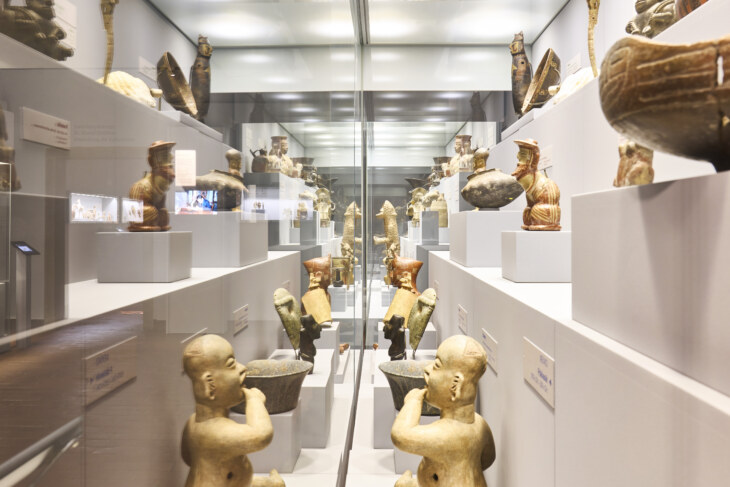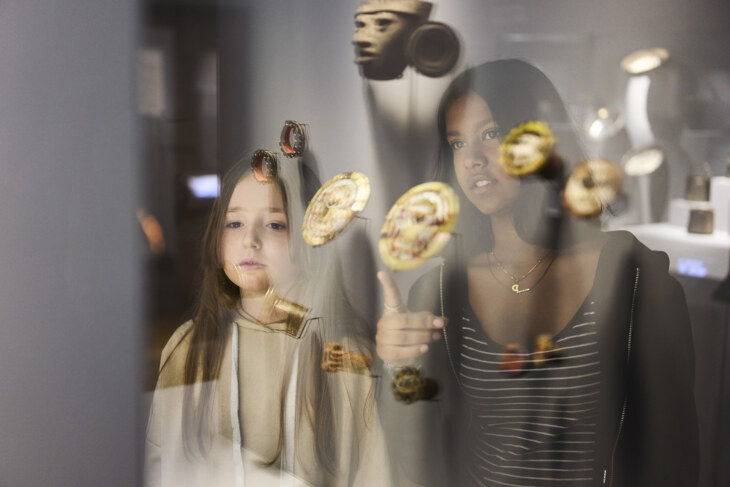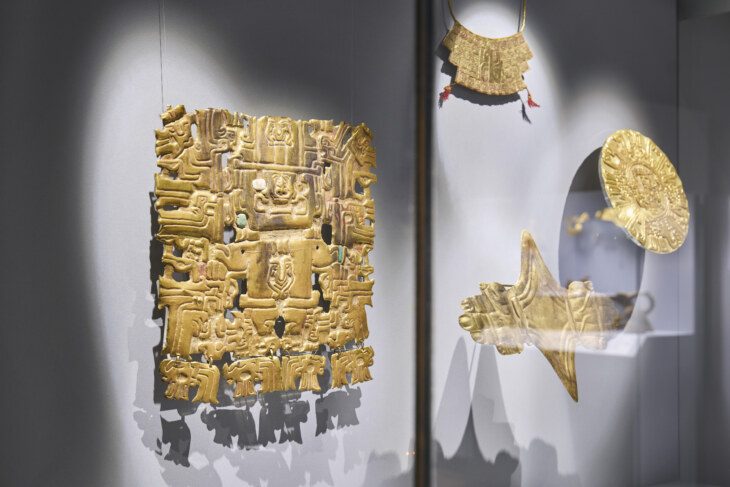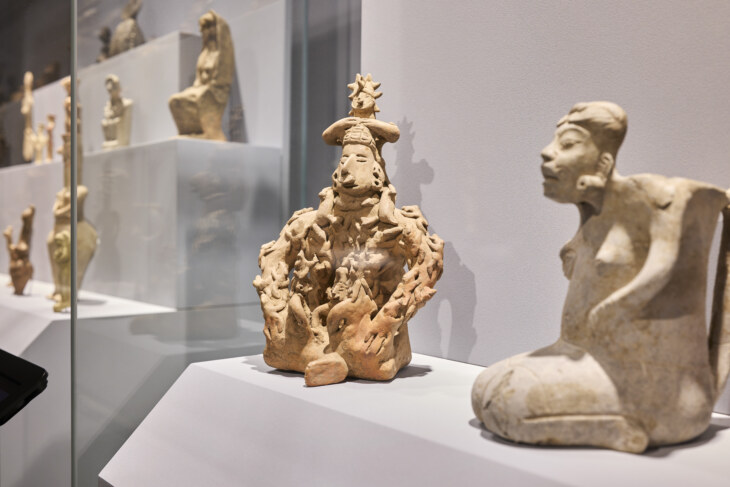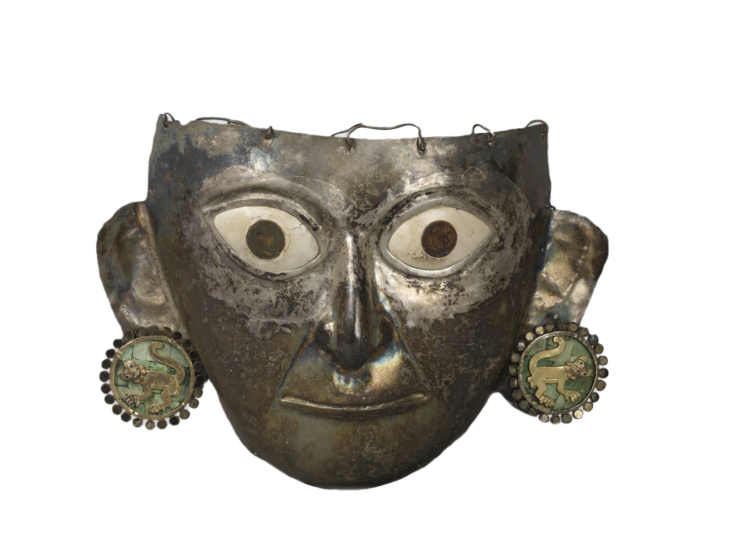Early Advanced Civilisations
Ebnöther Archaeological Collection
All the objects in the permanent exhibition come from a donation by the collector Marcel Ebnöther (1920–2008). He placed great importance on bringing cultures into a dialogue with one another. This makes both the differences and the unexpected similarities between ancient cultures visible. The objects are organized into ten thematic areas: vessels, warriors and weapons, idols, funerary rites, writing, music and dance, portraits, masks, jewelry, and the relationship between humans and animals. The works date from a period spanning around 7,500 years—from approximately 6000 BC to 1500 AD. Cultures from Central and South America, especially from Peru and Ecuador, are particularly well represented.
The exhibition begins with a female figurine from Tell Halaf in Syria (6th millennium BC) and ends with a marble portrait of the Emperor Augustus. Opposite, the development of ancient American ceramic art unfolds, from the Valdivia culture to Inca vessels from the time of the Spanish conquest. The presentation also ranges from the cuneiform tablets of Mesopotamia and the glyphs of the Maya of ancient Mexico to the knotted cords from the Inca Empire in South America. A special highlight is the silver treasure from the tomb of the young Urartian prince Inušpua, which is located in modern-day Turkey. The seven royal ceremonial vessels from the 9th century BC are presented here together for the first time.
Interactive tablets provide in-depth information, texts, and detailed views. Selected objects can be viewed from all sides.
Where Do the Objects Come From? Responsibility and Provenance
The provenance—the origin and ownership history—of cultural property is a central issue today in how museums deal with their collections. With archaeological finds in particular, it is often unclear whether they were legally excavated and traded.
A large part of the Ebnöther Collection was purchased on the international art market between 1975 and 1989—a time when there was little scrutiny of where such objects came from. Many pieces come from regions where grave robbing remains a problem to this day. Archaeological sites are illegally looted, and important cultural assets are removed from their original context to be traded—often ending up abroad.
The Museum zu Allerheiligen takes this responsibility seriously. It approaches the Ebnöther Collection openly and critically. Where possible, the origin of each object is carefully researched. To this end, the museum collaborates with experts, institutions, and authorities from the countries of origin—with the aim of learning more about the objects, clarifying unresolved questions, and finding fair solutions.


